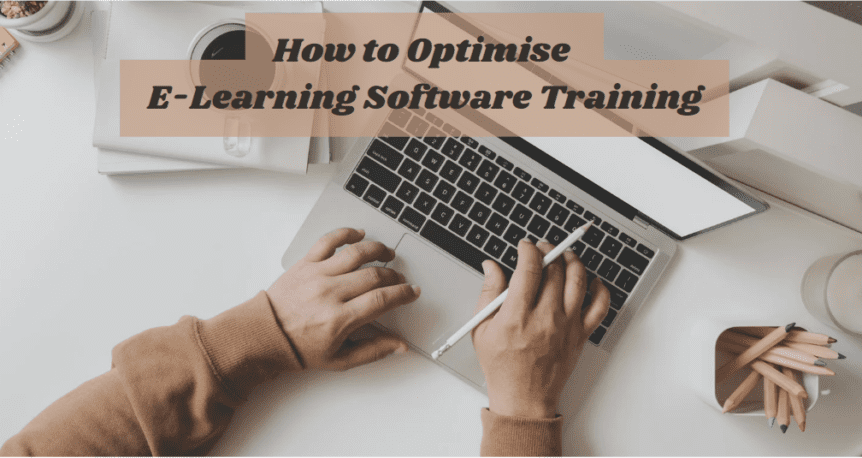How to Optimise E-Learning Software Training
Most organisations are going through a period of technological change as new technologies become available, systems change, and market expectations evolve. This includes those with clear digital transformation strategies as well as organisations that take a more ad hoc, financially driven, and only-when-it’s-needed approach. The common thread is that many employees over the coming months and years will need to learn a new software application.
There are many different options for training staff on a new software application. E-learning isn’t the only option, although it can deliver significant results, especially when combined with in-person training sessions and on-the-job training.
The Challenges of E-Learning Software Training
Before outlining the best practices for creating e-learning software training, it is important to highlight the challenges that can exist. These challenges apply to any training delivery method and are not always directly related to the training course.
In other words, even the best software training courses can fail because the challenges of implementing software training are not sufficiently addressed. Those challenges include:
- User buy-in – users can be resistant to change and the implementation of a new software application for a range of reasons. Overcoming this resistance and getting buy-in is essential.
- Lack of knowledge – there are situations where organisations assume employees will be suitably proficient in the new software application with little or no training. This especially applies when moving from one app vendor to another. For example, from one CRM or accounts app to another.
- User fear – user buy-in and resistance are mentioned above, but user fear can also be a factor. This is where users want to embrace the new software but don’t know how.
- Ongoing support – training on a new software application is rarely a one-time event. Employees generally need ongoing help and support.
Best Practices for Optimising E-Learning Software Training
Optimise Software Development and Customisation Processes
The best starting point for ensuring software training success is to start long before you begin creating an e-learning course. The best place to start is during the software development and customisation process where employees are brought along the journey.
This will help you avoid a situation where the new software application is completely new to the employee when they sit down to complete the e-learning course. Instead, the employee will understand the reasons for the change, they will be somewhat familiar with what has been implemented, and they might even have made a contribution during the development process. All these potential eventualities will help get buy-in for the training.
Develop Training in Modules
When large software vendors create training for their software, they typically do so in modules, starting with the basics and then bringing the learner on a journey as their competency levels increase. This is a good practice to replicate when creating software training in a corporate environment. It applies whether the training is on a custom application or a customised commercial application.
Include Demonstration Videos
Showing how a task is completed in a software application is often much better than explaining it. An explanation will still often be required, including step-by-step instructions. Learners will become more familiar with the process, however, if they have seen it work in a video.
Include Plenty of Opportunities to Practice
The best way to become proficient in a software application is to get plenty of practice, so make sure you provide learners with practicing opportunities. This can be in the form of exercises, simulations, and gamified elements.
Don’t Leave Training to the Last Minute
You are likely to encounter problems if the training you provide is last minute, especially if the software application is live and employees are expected to use it and learn how to use it at the same time.
Therefore, training on the application should be provided to learners as early in the implementation timeline as possible. Ideally, this should be before the software goes live.
Allow Enough Time
You also need to give learners enough time to get up to speed, taking into account the different proficiency levels and capabilities of different learners.
Provide Additional Support
Providing additional support is also important, as learners might need to refresh their memory on how to complete a task or function. Additional support can include:
- Manuals
- FAQs
- How-to guides
- Technical support
- AI tutor (an AI tutor trained in the software application that can answer learner questions in real-time)
Maximising ROI from E-Learning Software Training
The most important part of ensuring a software application implementation project is a success is that employees first of all use it and secondly use it to its full potential. Creating and then optimising e-learning software training is an essential step in the process, so it should be part of early planning and have sufficient resources allocated to it. This will ensure you maximise ROI from not only your training investment but also the investment in the software application.
